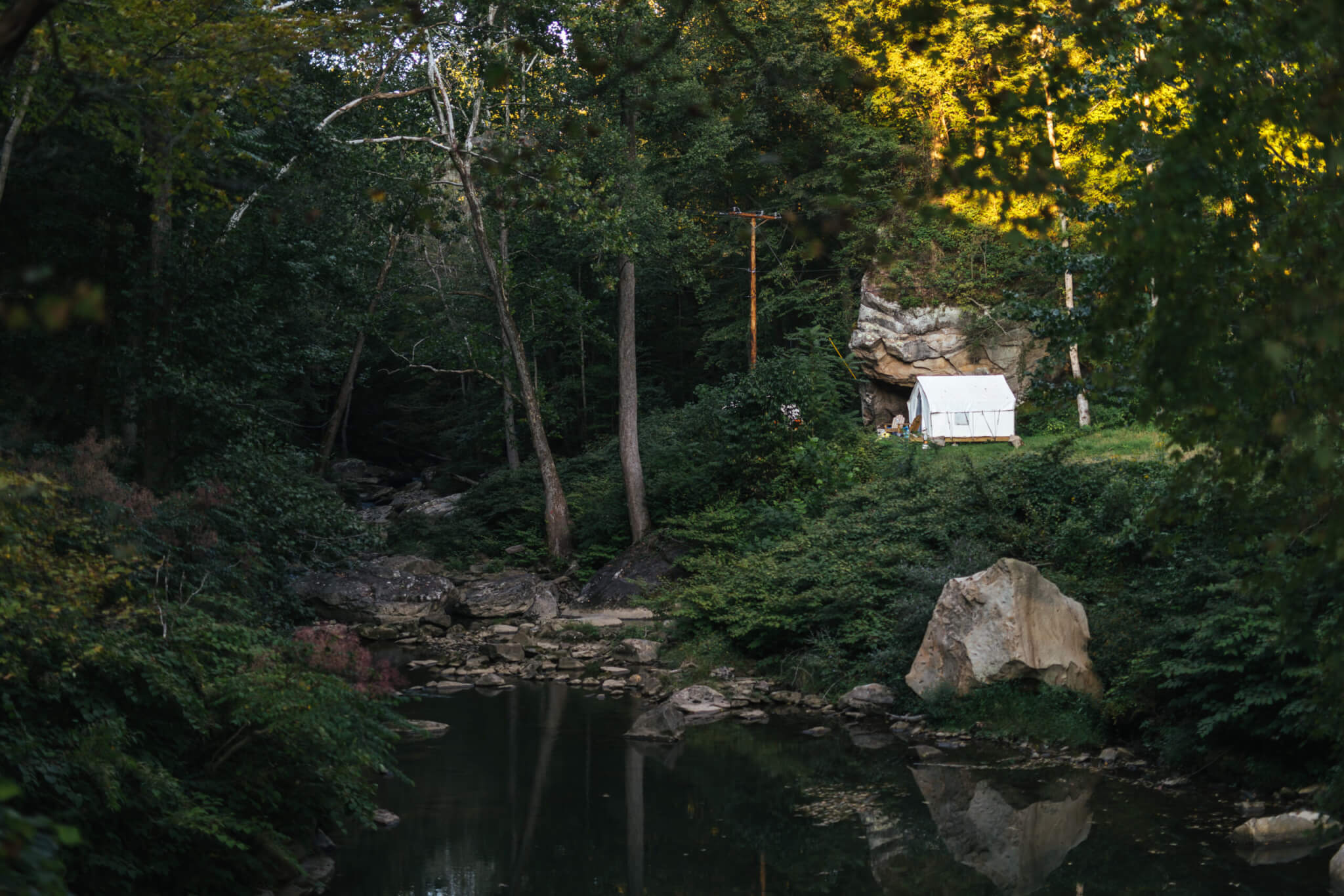
West Virginia state parks offer a variety of unique stays for visitors looking for something different.
This story was originally published in the July 2022 issue of Wonderful West Virginia. To subscribe, visit wonderfulwv.com
Written by Laura J. Roberts
Anyone looking for a place to unwind will find that West Virginia’s state parks offer many choices. Visitors seeking luxury will find it at Stonewall Resort State Park’s five-star accommodations, which include restaurants, a spa, and golf. Lodges at parks like Canaan Valley, Blackwater Falls, and Lost River include comfortable rooms, Wi-Fi, and full-service restaurants. Those who prefer a more rustic experience will find that many parks offer well-appointed cabins and campgrounds, too.
There’s a different sort of experience out there for the adventurous at heart. From remote cabins and yurts to the highest bed in the state, unique opportunities to get out into nature await Mountain State travelers.
Cottages, Cabins, and Camp Cars
Cass Scenic Railroad State Park is known for the train ride to the top of Bald Knob, the highest point on Back Allegheny Mountain. Over 100 years ago, the company town of Cass served to support the West Virginia Spruce Lumber Company. Today, visitors can take the train to Bald Knob, pulled by steam locomotives.
They can also step into the past with a stay in the original company housing. While loggers camped on the mountain, these homes belonged to lumber mill workers and their families as well as to railroad workers who kept the locomotives running.
“We’re probably the best-preserved company town in its entirety that I’m aware of, particularly with a functional railroad,” says Marshall Markley, superintendent at Cass Scenic Railroad State Park. “It’s just like it would have been in an industrial town. The houses are 1920-authentic on the outside. On the inside, they have modern amenities.”
The company cottages have been renovated to include modern bathrooms, comfortable furniture, and high-speed internet. They come in two, three, and four-bedroom layouts, and, while the original Cass residents cooled off with fans and warmed with stoves, today’s guests enjoy central air and heat.
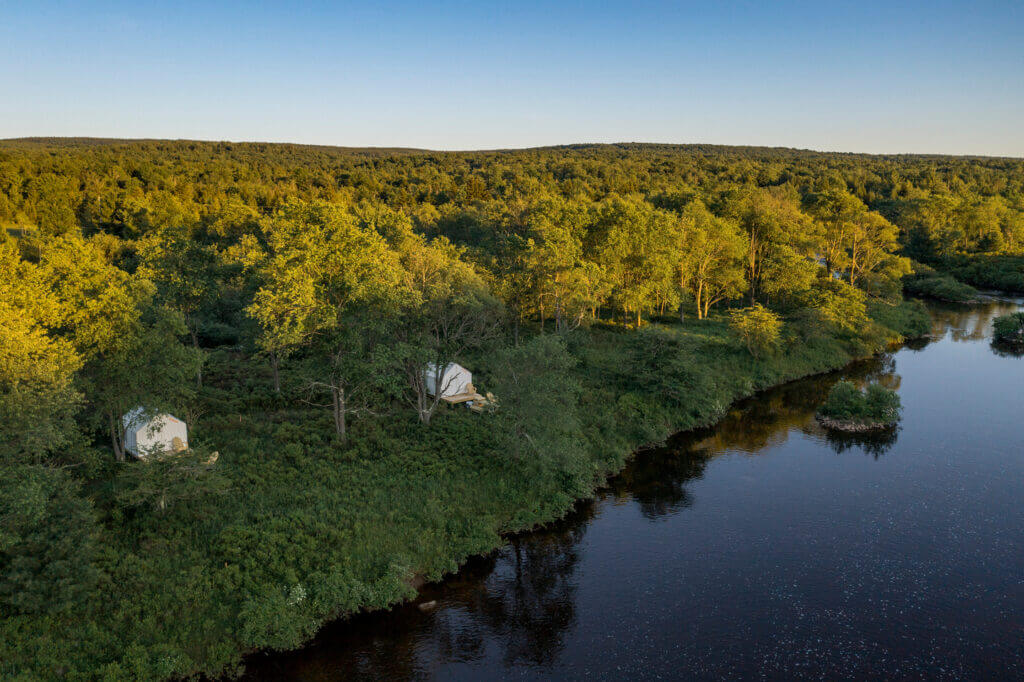
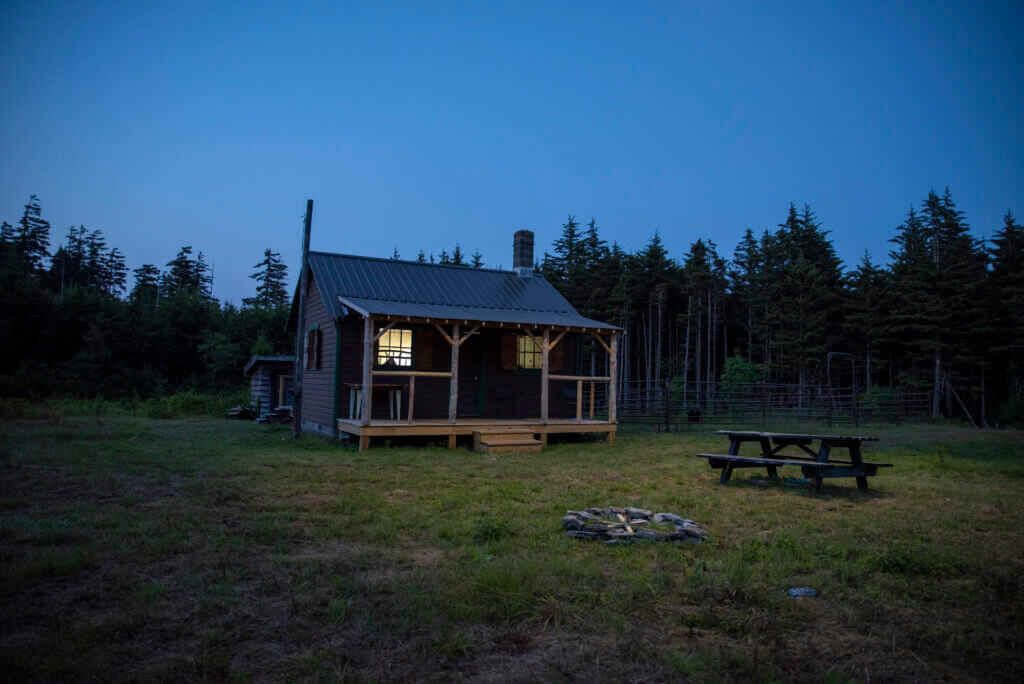
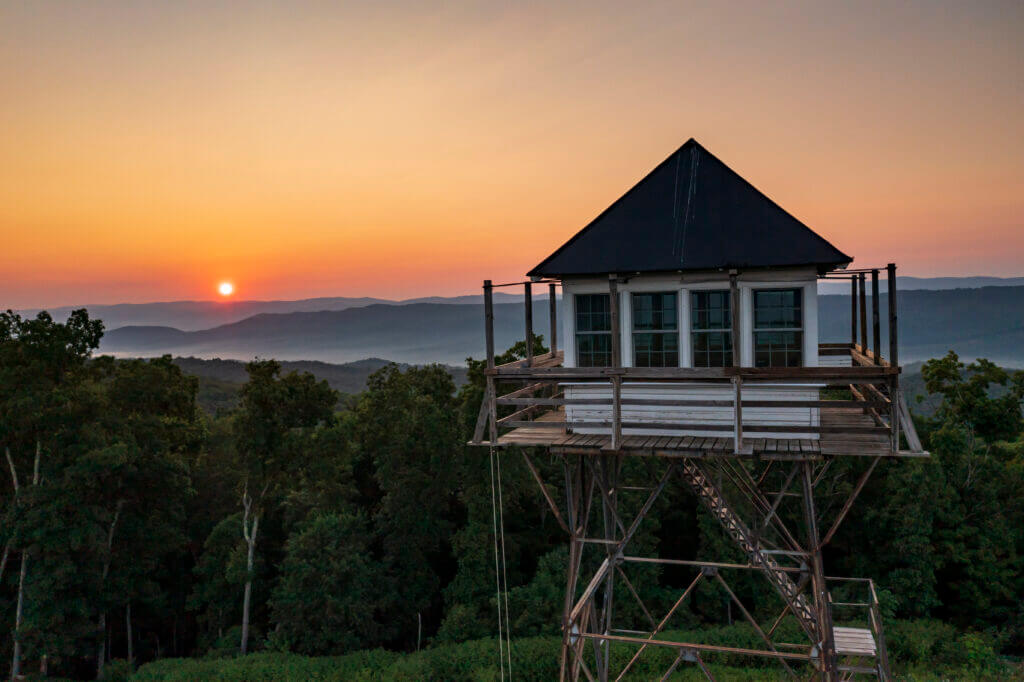
“We’re the only place, I think, that you can get that railroad experience just like the loggers did, that same trip right up the mountain like they would have taken to harvest that lumber,” Markley says. He adds that railfans who go for the train ride will soon be able to book an on-theme overnight experience in a Castaway Camp Car. These refurbished rail cars—complete with electricity, water, and plumbing—will be placed along the rail line beside the Greenbrier River. Fishermen may find this a perfect opportunity to get back to nature and spend a few days on a secluded section of the river.
The Highest Beds
If town feels too crowded, Cass offers wilder options. The Bald Knob Wilderness Cabin and fire tower were part of the Monongahela Forest’s fire detection program. Forest guards and fire wardens were posted on the mountain until the program’s end in the 1970s. Now, the cabin has been renovated and is available for adventurous visitors looking to get off the grid.
“You can either go by horseback or train,” Markley says. The Wilderness Cabin is accessible by a three-hour horseback ride via Autumn Breeze Stables or the Cass Scenic Railroad. Visitors enjoy the company of an Autumn Breeze outfitter during their stay.
The adjacent Bald Knob Fire Tower was recently renovated by the West Virginia Division of Natural Resources and made safe to climb. Guests can sleep in it, although it’s a simple place. They bring their own water and have access to a pit toilet. What it lacks in amenities, however, the tower makes up for in 360-degree views.
“From the top of the fire tower, you’re at the highest point in West Virginia, which is 4,070 feet,” Markley says. “You’re completely by yourself on it. There’s no place where you can feel more out in the wilderness, and the view is incredible. You can see for miles in each direction, you can see all the slopes of Snowshoe, you can see their fire tower and all of their facilities.”
Hike-in-style wilderness cabins are also available for rent at Lost River and Camp Creek state parks. Lost River’s primitive outpost cabin sits adjacent to an old fire tower on Big Ridge Mountain and has been beautifully restored. Firewood, gas lighting, a wood-burning cookstove, and a refrigerator are included; guests bring food, water, and bedding along on the two-mile hike to the cabin. Similarly, Camp Creek’s ranger outpost cabin is a 3.3-mile hike into the backcountry.
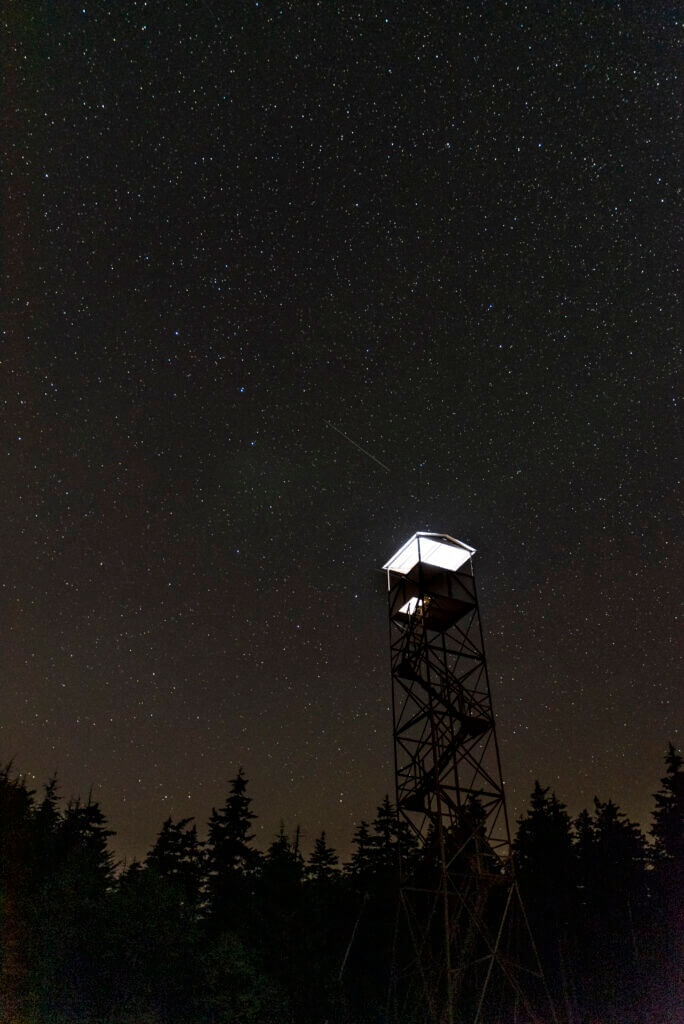
Photographer: Tyler Evert
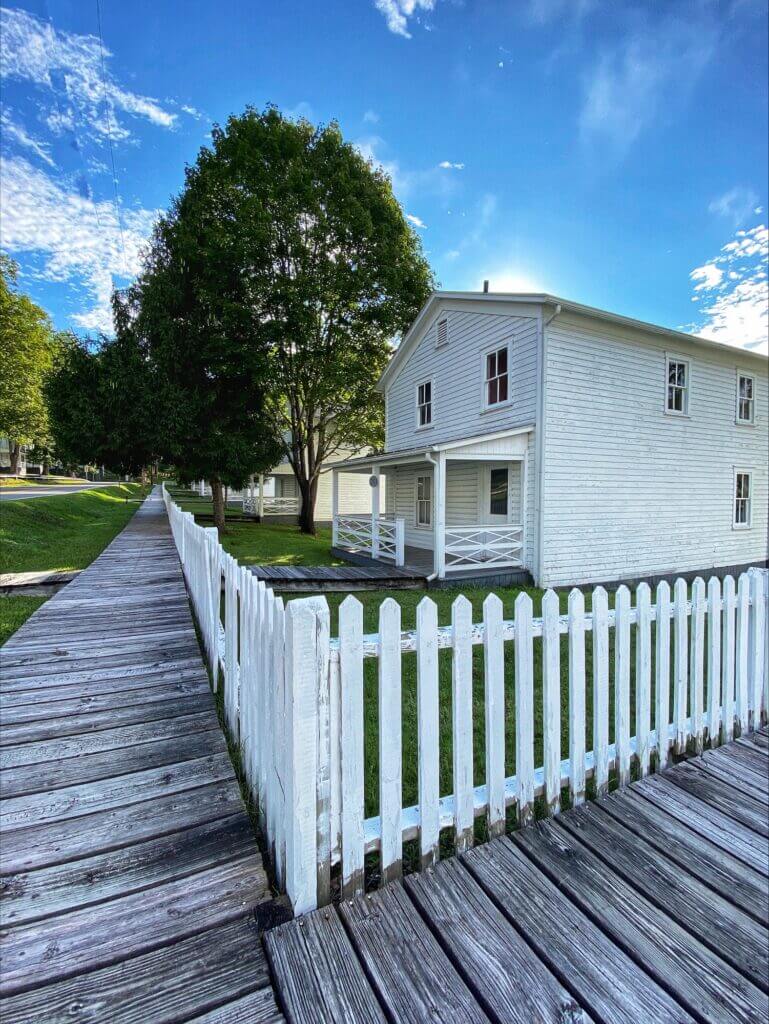
With no internet or cell service, Markley says the goal of a visit is to “Rewind, unplug, and relax—because you really get a chance to get away.”
For fire tower fanatics who aren’t up for a long trek, the Thorny Mountain Fire Tower in Seneca State Forest is easier to access than the Bald Knob tower. Up to four guests can sleep 65 feet in the air and enjoy panoramic views of the state forest and horizon.
Huts and Yurts
Many state parks have campgrounds to which guests can take an RV, camper, or tent. Those seeking a middle ground between cabins and camping, however, may find an age-old alternative at Tomlinson Run State Park. In addition to traditional cabins and campsites, visitors to the northernmost part of West Virginia can stay in yurts.
A yurt is a round tent with a rigid frame. Designed to be portable, they originated with the nomadic peoples of Asia and often rest on a wooden platform. Tomlinson Run’s yurts are the only ones in the state park system and each is equipped with a cooler, a propane stove, cookware, and bunk beds. Each yurt sleeps up to five people, and they’re an excellent choice for novice campers who want to eschew a tedious setup and get right to the fun.
While yurts tuck campers safely into a snug embrace, five state parks offer yet another unique way to enjoy an overnight: glamping. A portmanteau of “glamorous” and “camping,” glamping offers a camping atmosphere—fresh air, a toasty fire, and night skies—with the comfort of a real bed and sturdy shelter. Glamping is a happy medium between nature and luxury.
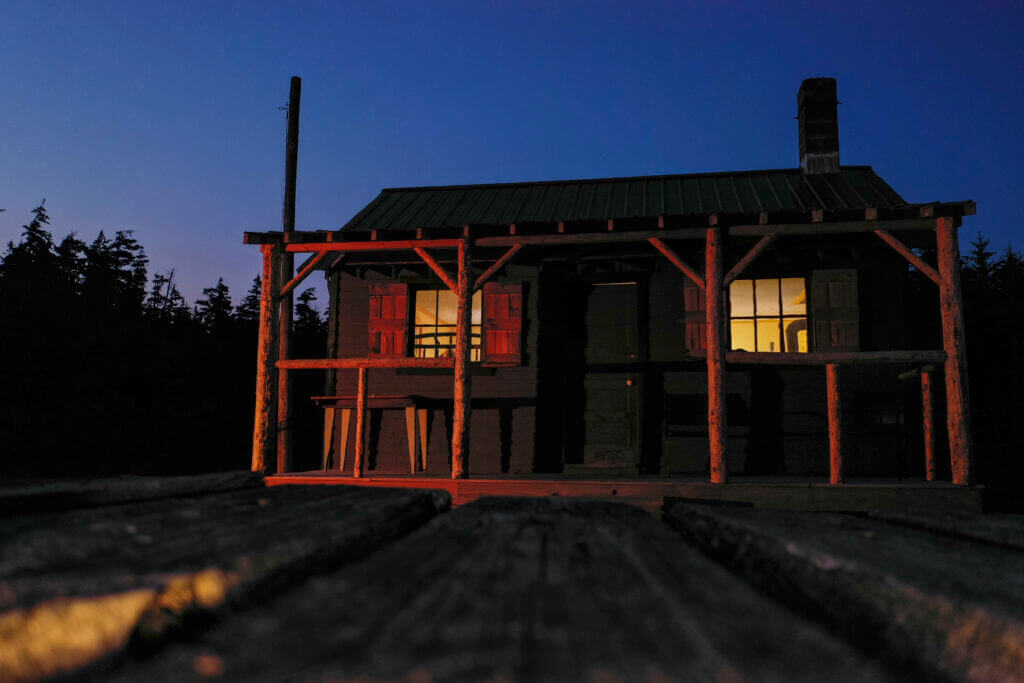
“Last year we started an initiative with the Tentrr company of New York for remote glamping–camping experiences,” says Brad Reed, chief of West Virginia State Parks and Recreation. These environmentally friendly campsites sit in remote sections of the parks, often accessible by a service road or Jeep trail. Visitors bring bedding and supplies; Tentrr provides a roomy canvas tent on a raised, wooden platform. The site comes with all the necessary camping accouterments: queen-sized memory foam mattress, picnic table, seating, a fire pit, and a camping toilet with privacy tent.
“This is not your grandfather’s camp experience,” says Reed.
Tentrr’s sites are well-suited for both couples and families. They come with an extra pop-up tent; larger groups can reserve a double site. They’re economically friendly, too. At about half the nightly cost of the cabin, the sites are a sensible choice for families on a budget. Moreover, campers who might normally tow an RV can get the outdoor experience without paying high gas prices. The company also offers a rain guarantee: Travelers can get their money back if the weather turns foul during the trip.
According to Reed, in addition to the ease of a Tentrr site, their remote locations ensure more privacy than campers will find at the campground—and, in most cases, a stunning view.
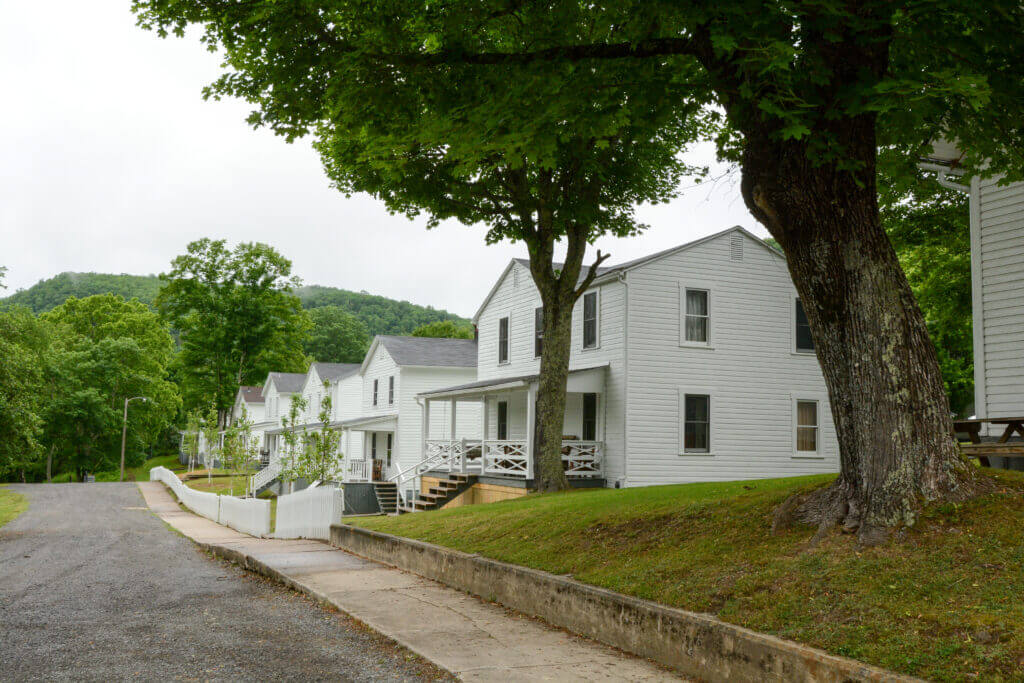
“For example, the ones at Cacapon are up on Cacapon Mountain and have their own individual overlooks,” he says. “They’re right out on the edge of the canyon. One of the sites at Hawks Nest, which is down on the New River, is as nice a campsite as you might find anywhere in the United States. So we’re excited to be a part of the Tentrr organization.”
The Tentrr sites have been popular with guests, and the cooperation with the parks has been a positive one. Reed says any such partnership needs to fit into the spirit and mission of the West Virginia state park system. He hopes to offer more sites in the future. Visitors can reserve Tentrr sites at Blackwater Falls, Cacapon, Coopers Rock, Hawks Nest, and Lost River state parks. There are about 10 sites per park now, with plans to expand to other parks in the future.
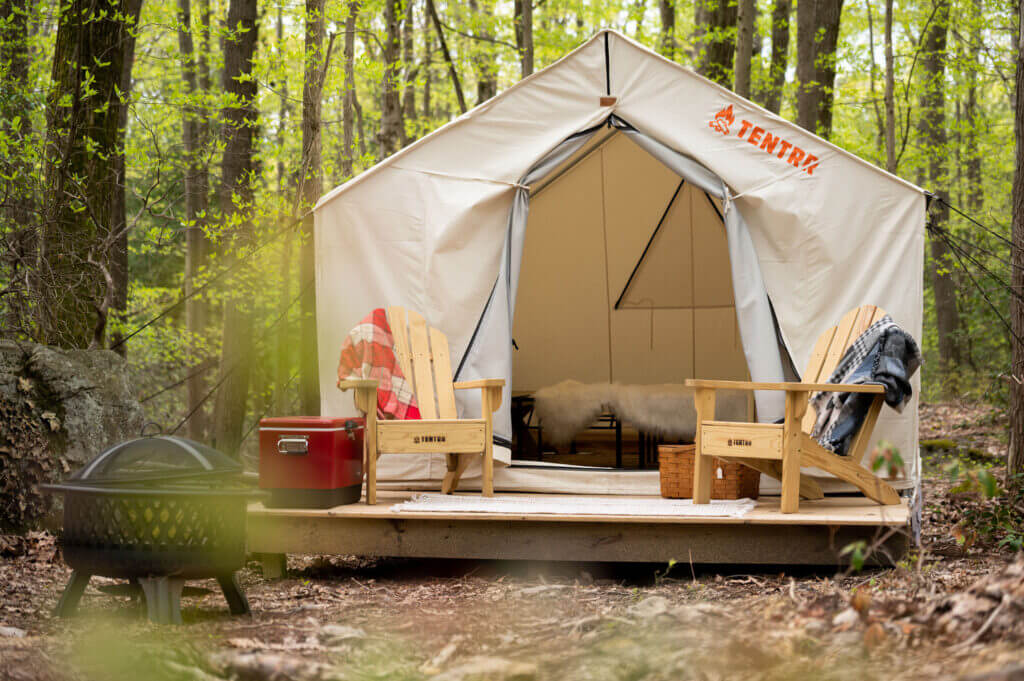
Photographer: Jaden Hardesty
Reed believes West Virginia’s state park system is one of the best in the country in terms of natural beauty and the scope of facilities offered. With so many lodging options, visitors can find the one that best fits their needs.
“It’s a credit to those who came before us that identified these very special areas and had the interest and the ability to preserve them and then to build these facilities on them,” he says. “I feel like I’m walking in the footsteps of giants who came before me, the ones that had the vision to put this system together. And now we protect it. We enhance it. We make it better.”











